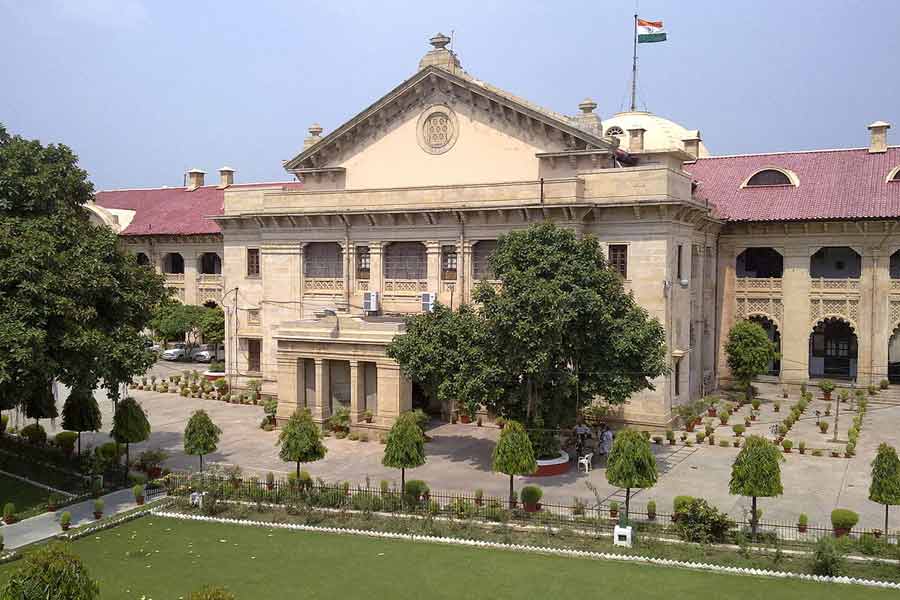 |
| A play for kids staged by Esho Natak Shikhi on June 1. Picture by Aranya Sen |
If good intentions have held for six months, one hopes they won’t disappear overnight. Shishu Kishore Academy, a wing of the state department of information and culture, was inaugurated on December 23, 2007, to “fill the gap left by once-prominent organisations like Monimela, Brotochari Shangha and Kishore Bahini” and promote literature, music, theatre, painting, dance and other activities among children. And they already have quite a few things to show.
They have organsied cultural programmes in the memory of Rabindranath Tagore and Kazi Nazrul Islam, held exhibitions and discussions — where children from both Calcutta and the districts voiced their opinions on Tagore and Upendra Kishore Roychowdhury’s works. There were film screenings and last week they also launched a children’s magazine. Coming up on August 7 is a discussion only for children on the writings of Abanindranath Tagore.
“For a change we want the children to speak and grown-ups to listen,” said Tapan Bandhyopadhyay who is the secretary of Sishu Kishore Academy and the head of the editorial board of the new magazine.
The tri-monthly magazine Chiro Shabuj Lekha has certainly begun on the right note. Edited by Sunil Gangopadhyay the colourful magazine, priced Rs 15, is finely illustrated and contains stories and poems by Samaresh Majumdar, Nabanita Deb Sen, Enakshi Chattopadhyay, Amar Mitra, Amitabha Choudhury and others. There are puzzles, profiles of Pandit Ajay Chakraborty, Nirendranath Chakraborty, travelogues and articles on science, hobbies, sports etc. Children are welcome as contributors but their writing must satisfy the editorial board.
“The publication department of the academy is going to be really big, we have asked for a grant of Rs 80 lakh, because we want to bring out various volumes of fiction and non-fiction specially designed for children. First on the list is a five-volume collection of the best stories in Bengali literature, Shishu o Kishore Sahityo Sambhar. It will have writings that have long gone out of print. Then there will be a collection of fairytales Asiar Rupkatha and Bigyankosh. These can be expected by Durga puja,” said Badhyopadhyay. A library, weekly cultural activities are also in the pipeline.
The Sishu Kishore Academy has also been hosting children’s plays and dance programmes.
It recently supported the 5th National Theatre Festival organised by Eso Natak Shikhi at Rabindra Sadan (June 1-3). Inaugurating the event playwright and actor Manoj Mitra said: “In our childhood little thought was spared for children and now I realise we were a deprived lot. Even 30 years back children’s theatre largely amounted to a child with a cotton moustache doing “Obak jolpaan” directed by the school maths teacher.”
Day One of the festival included plays “Joggi Khoka” produced by Bangla Sishunatyam, Bangladesh and Namaste Guruji by Akhila Kerala Balajanasakhyam. Most plays focused on problems faced by children or issues that concern them directly like environment, peace and relationships. Eso Natak Shikhi’s play, Jantrana, highlighted the destructive forces of parental expectations that can transform children into androids.
Sishu Kishore Academy is also planning a gala cultural event in North Bengal for children between 5-14 years.
Sebanti Sarkar
Wildlife quiz
Students take part in environmental quiz. Picture by Anindya Shankar Ray
 |
| Students take part in environmental quiz. Picture by Anindya Shankar Ray |
In an attempt to create environmental awareness, the British Council Library organised a quiz on ‘Conservation and Wildlife’ on May 29. This event marked the beginning of their science and technology week.
As a first time initiative, the event saw participants from schools as well as from various professions. The audience were shown clippings from five documentaries and asked questions related to them.
The first documentary — The Last Dance by Ashima Narain — portrayed the ill-effects of sloth bear poaching in India, along with the consequences of habitat destruction. The following clipping —Turtles in a Soup by Kalpana Subramaniam — depicted various aspects of the illegal turtle trade that still exists in the South-East Asian countries. Silenced Witness captured how male elephants are maltreated for the purpose of upmarket ivory trade. The rising deforestation owing to mass encroachment of urban settlements and its negative impact on the elephant population were also highlighted.
Around 20 questions were asked at the end of the first three clippings, witnessing active participation from the audience.
After a short break, clippings from two other documentaries were shown. Purple Butterfly threw light on butterfly trade in Kerala and how numerous species are on the verge of extinction. Himanshu Malhotra’s Diminishing Resources documented the damage caused in coral reefs across the globe. Questions came pouring in from quizmaster Kushal Biswas on sea horses, the uniqueness of giraffes and on the endangered species of butterflies at the end of the second session.
Sixteen-year-old Hena Arora confessed that environmental degradation never concerned her much. But after watching the screenings she now feels more responsible. “Every individual must do his bit and save wildlife,” she said. For 17-year-old Runita Das, the questions seemed rather easy. “Despite it being called a fun-quiz, the questions should've gone into greater depth,” she said.
Tanmoy Das Lala











